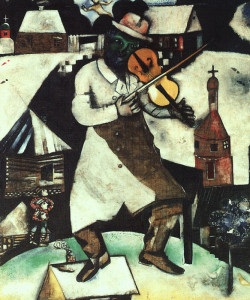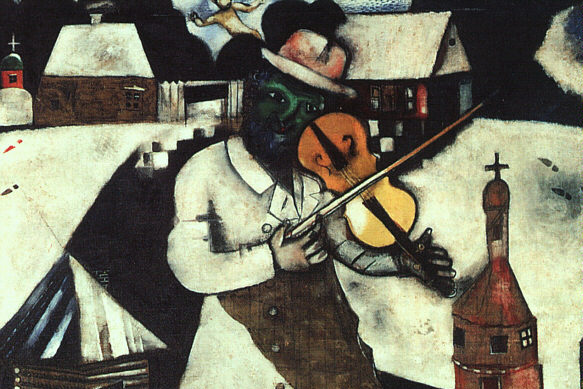 When I was a young man—a teenager, really—I did the usual crazy stuff of the early ’70s: kept my hair long; wore bell bottoms, wide ties, and crazy plaids; kept at least the top three buttons of my shirt open; and, of course, listened to rock-n-roll.
When I was a young man—a teenager, really—I did the usual crazy stuff of the early ’70s: kept my hair long; wore bell bottoms, wide ties, and crazy plaids; kept at least the top three buttons of my shirt open; and, of course, listened to rock-n-roll.
But through it all I had this love for older things. I think it had something to do with my grandmother, Nana, whom I loved with great affection. She often lamented the loss of the old things and the old ways. She missed the Latin Mass. She missed when manners were better, when people remembered how to dress well, when things were more certain. She often told me how much she missed the beautiful old songs, the incense, the veils, the priests in cassocks, and so many other things. She had my ear; I was sympathetic.
Somehow her love for older things and older ways took hold in me, even as I indulged in the silly trappings of the seventies. My parents’ generation (born in the late ’20s and ’30s) and even more so the generation born after the Second World War were somewhat iconoclastic. The motto seemed to be “Out with the old and in with the new … new and improved.”
Much of the iconoclasm of the ’50s through the mid-’80s has now given way; many older things are once again appreciated. As I brought some things down out of the attic of my parents’ house in the early ’90s, my mother (strangely) appreciated them again. Other family members took some of the old silver. My chalice was actually an old castoff that I had restored.
Statues have begun to return to churches; some of the old hymns have returned. The Latin Mass, once relegated to the basement, has been dusted off and is now appreciated again by many (mostly younger) Catholics. I have also had the good fortune of being able to help restore two old churches to their former glory, undoing some of the iconoclasm from which they suffered. I even wear my cassock quite often.
Traditions are established and endure for a reason. Fundamentally, they simplify life by giving structure, boundaries, and expectations. It is easier for people to navigate in the realm of tradition. But traditions begin to be endangered when people forget their purpose, when people forget where they came from or why they are observed, when people forget what they mean or symbolize.
What would happen if I were to get into a time machine, go back to 1940, and ask the people of the parish some of these questions: Why do women wear hats and veils while men do not cover their heads? Why do we kneel to receive Communion? Why is the Mass in Latin? Why does the priest face toward the altar? Why are all these things done this way? I suspect I would get answers like this one: “I dunno, we just do it that way. Why don’t you ask the priest?”
I wonder if the first step in the loss of a tradition occurs when it no longer makes conscious sense to people, when it is no longer clear to them why something is done, when all that they can say about it is “That’s just what we do.”
At some point traditions run the risk that they become wooden and rote, and we find that we are sifting through the ashes of an old fire that has largely gone out. Unless we fan into flames the gifts of God’s love (cf 2 Tim 1:6), our love and appreciation of these things grows cold and their beauty fades. And then when someone asks, “What is this thing?” we reply, “What, that old thing?” And then the suggestion that we “get rid of it” receives a cursory nod of agreement and the response, “Sure, that’s fine; get rid of it.”
But the process begins with forgetfulness. And forgetfulness leads to a lack of understanding, which then gives way to a lack of appreciation. All this culminates in an almost gleeful dismissal of the old things and of the now-tarnished traditions that once sustained and framed our lives.
To be sure, some things need to fall away. Perhaps there is a time and place to “lose” things for a while, only to rediscover them later. But what we have experienced in the last 60 years has been more severe than this sort of natural ebb and flow. It has been a rupture, a radical discontinuity that has shaken many of our foundations, Church and family especially.
Therefore we do well to remember many of our traditions. The word “remember” suggests a process of putting the pieces back together again, a process of collecting some precious things that have been severed from the body and making them once again “members” of the body, the Church, and of our families. Remembering our lost traditions, even as we establish some new ones, is an important way of ensuring continuity with our heritage.
In the words of G.K. Chesterton, tradition is the “democracy of the dead,” wherein our ancestors get a say in what we do. Tradition is a way to “remember” the Church, to honor the ways and practices of the ancients that my grandmother recalled with fondness and a sense of loss. And it was a loss, but a loss I pray we are beginning to remedy as we remember the best of the past and recover our traditions.
I thought of all of this as I watched this video of the song “Tradition!” from the musical Fiddler on the Roof. It was written at a time (1964) when the sweeping changes of the last 60 years were already underway. And although the song tips a hat to tradition, it ultimately ridicules it by implying that tradition is the kind of thing that keeps men in charge, women down, and forces children into unhappy arranged marriages.
At a key moment in the song, Tevye describes the tradition of the prayer shawl and says, “You may ask, ‘How did this tradition get started?’ I’ll tell you.” And then after a pause he says, “I don’t know, but it’s a tradition!” The first sign that a tradition is in trouble is forgetfulness.
The musical pretty well captures the iconoclastic attitudes emerging at the time that were cynical of tradition in a general sort of way. Despite that cynicism, Tevye rightly notes what we have come to discover only too well:
“Without our traditions our lives would be as shaky as a fiddler on the roof.”

